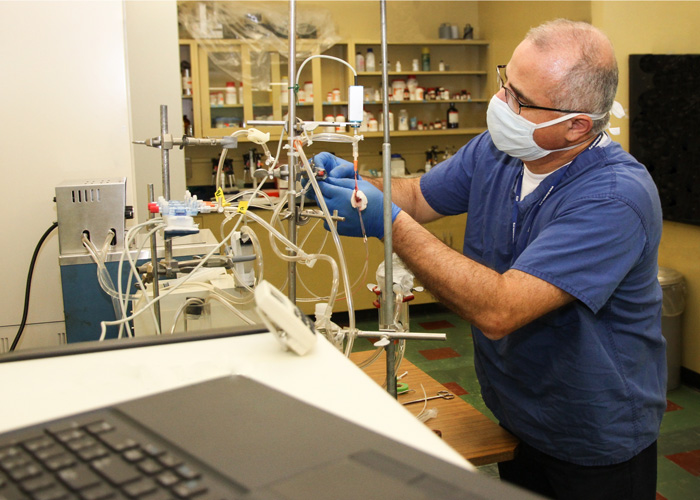Womack Dissertation Abstract
Advancing Systems Biology: An Accessible Computational Platform and Integrated Model for Human Cell Cycle Regulation
Dissertation Date: November 20, 2025
Dysregulation of cell cycle control is a fundamental hallmark of cancer, driving uncontrolled proliferation, genomic instability, and therapeutic resistance. In normal cells, progression through the cycle is coordinated by a network of cyclin–CDK complexes, tumor suppressors, and regulated degradation machinery that together ensure accurate genome duplication and segregation. When these pathways are disrupted, cells bypass checkpoints, accumulate mutations, and evade therapies designed to induce arrest or apoptosis. Computational modeling provides a powerful means to simulate these molecular networks, predict how perturbations alter proliferation dynamics, and guide rational therapeutic design. However, most existing models remain limited, often focusing on isolated phases, relying on poorly calibrated parameters, or requiring programming expertise that restricts accessibility. These constraints have slowed the adoption of systems-level modeling in translational cancer research.
To address these challenges, this dissertation developed an accessible modeling platform and a comprehensive, experimentally calibrated model of the human cell cycle. The platform, BioModME, is a web-based environment designed to simplify computational modeling by providing an intuitive graphical interface for model construction, simulation, analysis, and visualization without requiring coding skills. BioModME supports parameter management, documentation, and reproducibility, enabling models to be shared, adapted, and extended across laboratories. Its modular design allows researchers to integrate multiple regulatory pathways into unified mechanistic frameworks, bridging experimental biology with computational systems analysis. Building on this foundation, a mechanistic differential equation-based model of the human cell cycle was constructed to capture regulatory interactions spanning the G1, S, G2, and M phases. The model integrates key modules including CCND:CDK4/6, CCNE:CDK2, CCNA:CDK2, CCNB:CDK1, RB1:E2F signaling, and APC/C-mediated degradation, and explicitly represents protein synthesis and degradation. It was quantitatively calibrated using high-resolution Fast-FUCCI live-cell imaging data from U251 glioblastoma cells, ensuring that simulated phase durations and doubling times matched experimental observations. The model reproduced canonical checkpoint behaviors: mitogen withdrawal induced reversible G1 arrest, and transient ATM activation stabilized p53 and induced p21-mediated DNA damage arrest with full recovery. It also accurately captured experimental drug inhibition dynamics, including CDK4/6 inhibition by Abemaciclib, PLK1 inhibition by Volasertib, and their combined effects on cell cycle progression.
Return to Dissertation Schedule


